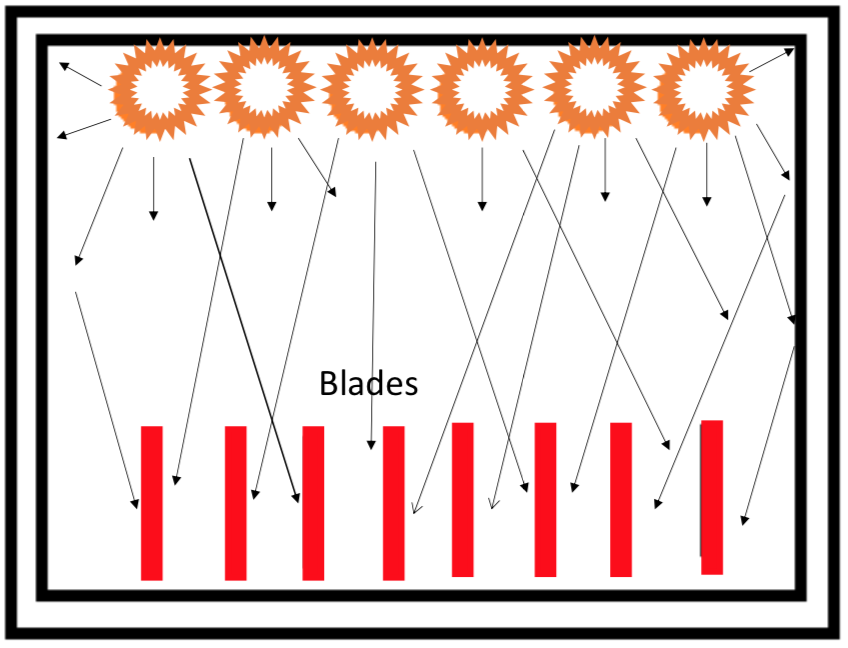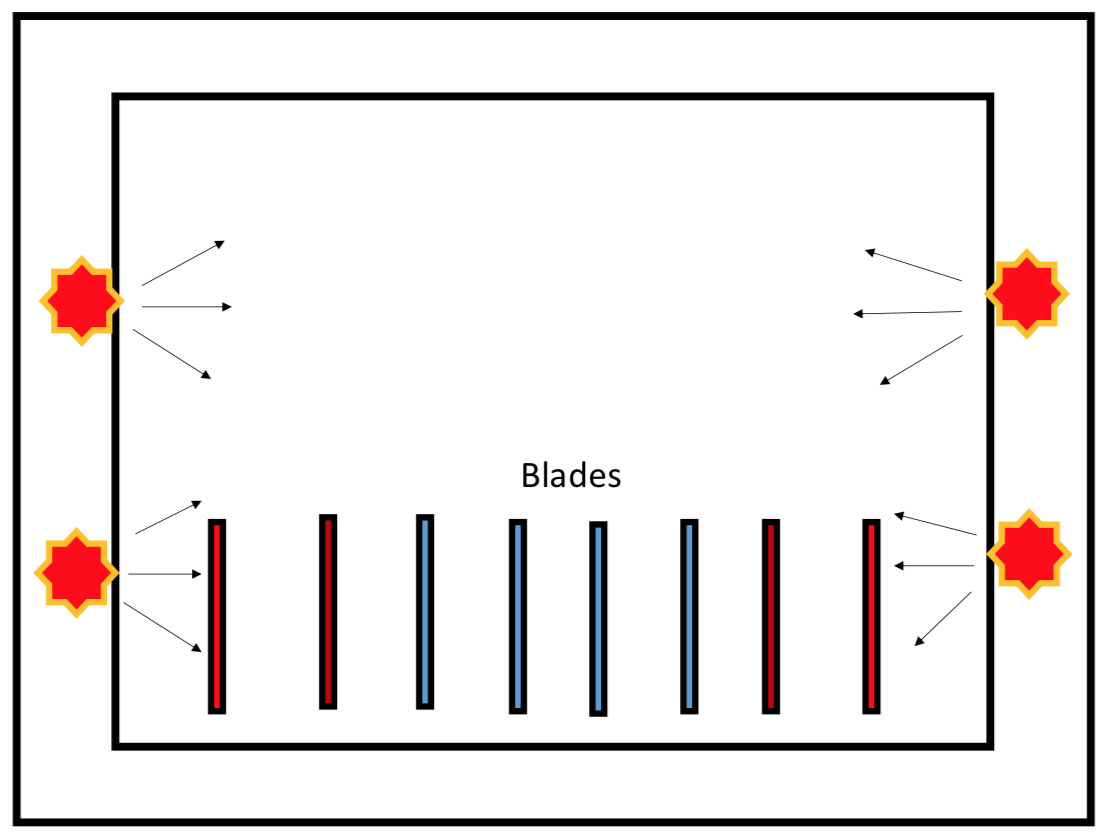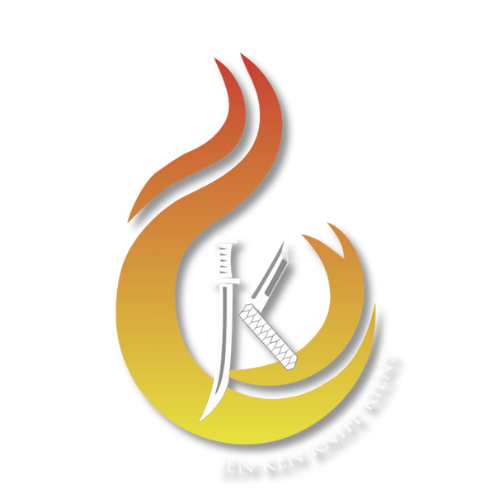Fiber Front Load, Kilns
Why FFL is Better than a side fire brick kiln
Why the Jen-Ken Fiber Front Loader Heats differently than a side fire brick kiln?
Fiber Front Loader Knife Oven

Fiber Walls Reflect Heat as that material is an insulator as does not absorb heat like fire brick. The metal gets all the infrared heat.
Radiant heating simply uses radiation to heat surfaces of objects. Unlike convection heating that heats the air, radiant heating emits infrared radiation, which travels unimpeded until it hits a solid object, which absorbs the radiation and warms up. Suspended coils in the top does the trick.
Brick Walled Oven:

Traditional brick kilns have coils in grooves of the brick and the heat is not directed at the sides of blades at one time. The metal does get hot and glows like we would expect, but the physics of this shows that the outer blades would get hotter first and stay hotter than the next rows in toward the center. Convection heat has to heat the air and then the metal absorbs it. Metal in the direct path of the glowing coil will be exposed to the radiant heat would be hotter. The far end of the kiln tends to stay hotter because the heat is trapped there, as the door is opened and closed, the tangs tend to get cooler at the opening with every retrieval.
Brick walled oven


